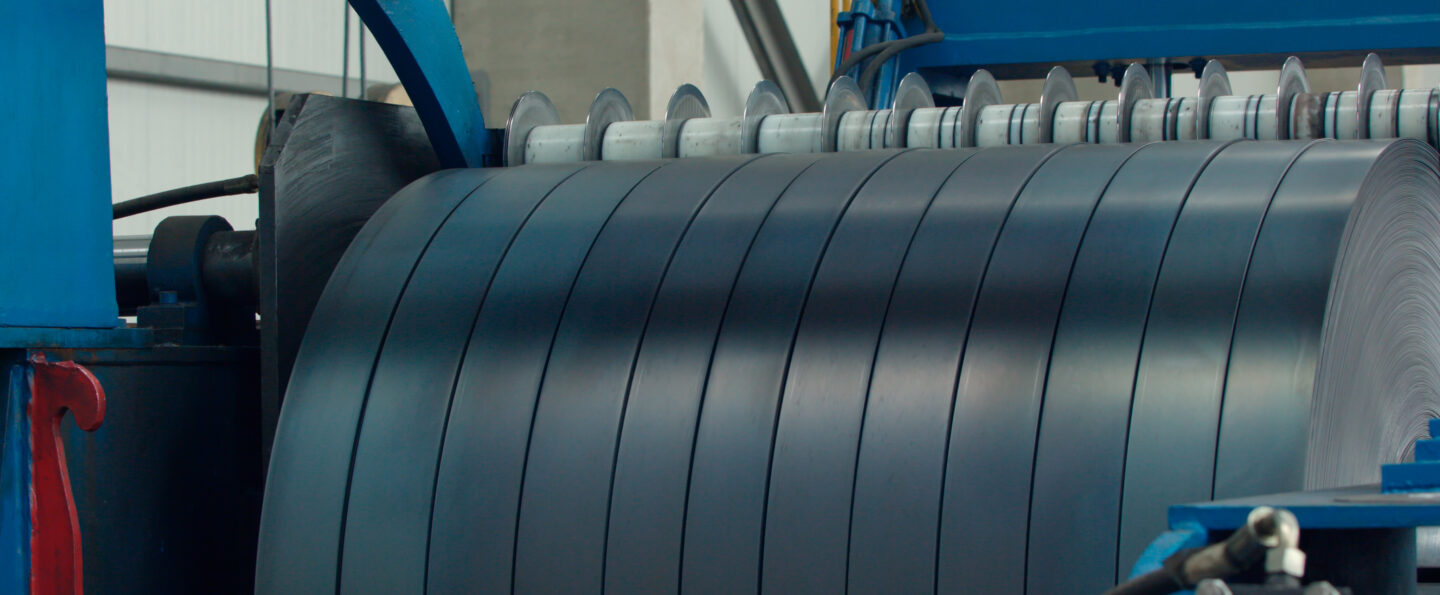Focusing on the facts to tailor a new future for fashion
PVH’s Stefan Larsson on his approach to rebuilding the apparel business, sustainably...
YouTube
January 23, 2024 in CEO Dialogue Series
Anticipating rising raw material costs, Tata Steel’s CEO & Managing Director TV Narendran tells IMD President Jean-François Manzoni how he introduced a change management process to instill a culture of future readiness...
Strong, resistant to wear and tear, and extremely versatile, steel is one of the toughest and most commonly used metals worldwide. Tata Steel, the world’s 10th largest maker of the commodity, in many ways embodies the very resilience and adaptability of the product it makes.
Founded over 100 years ago as one of the Tata Group companies established to help forge India’s industrial revolution, Tata Steel has transformed itself from a relative minnow into a global player with $33bn in annual revenues and 65,000 employees in 26 countries.
A major milestone was the acquisition in 2007 – a century after it was established – of European steelmaker Corus, which catapulted Tata Steel from 50th to 10th position in the global league table. Yet that deal would soon turn into an Achilles heel after the 2008 financial crisis precipitated a 20% drop in European steel consumption and a structural decline in the market.
Since 2017, Tata Steel has been led by TV Narendran, an engineer by training who spent 25 years climbing the corporate ladder. When he took over the top job, Tata Steel was being squeezed by rising raw material costs and falling steel prices. Regulators in India temporarily forced the company to buy raw materials from the open market instead of getting them from its own mines, causing profits to crumble by 25%.
This crisis was the catalyst for a long-term change initiative to prepare the steel major for future disruption. One of its competitive advantages was owning its own mines, contributing to profit margins in its India business of 20-35%. Yet with these mines coming up for auction by 2030, the company recognized the need to act early to reduce costs permanently.
“We said, ‘Can we preserve that margin even if you have to buy raw materials in the market?’” recalled Narendran. “And that was a good goal to have because that would prepare us for the future. In some sense, it also meant we would not be sitting on our haunches just because we are doing well just now.”
The change initiative was dubbed Shikhar25: “Shikhar” is the Sanskrit word for “peak” while 25 represented the profitability target for its steel business, assuming it would pay market prices for its raw materials.
Narendran realized that the initiative would only succeed if employees could drive the program themselves. Tata Steel set up individual change units called Impact Centers in every operating unit where middle managers and workers are encouraged to submit ideas and goals. “We set the goals, bottom-up, we look for ideas. So there is a lot of work which is done on the shop floor in the different teams,” he said.
Recognizing and rewarding the best-performing Impact Centers is another important element. “A lot of people in the organization are involved either at ideation or execution, and there’s a lot of recognition which goes on for good work which is being done,” he said.
The change initiative was accompanied by a digital transformation program to extract $2bn in costs by using data and analytics to make the daily work of employees easier. Before they started, its senior leaders all joined a reverse mentoring program with digitally savvy employees aged under 30.

“As long as you’re clear about what you want to achieve, you’re able to communicate that, you can pull people towards that.”- TV Narendran, Tata Steel’s CEO & Managing Director
Operating in some of the remotest parts of India, the transformation involved high investment costs to bring connectivity to its mining operations and migrate to the cloud. Just as people started questioning whether they were spending too much money on IT infrastructure, the COVID-19 pandemic hit. “After COVID, nobody ever questioned us on that again,” said Narendran.
Three of its steel plants – one in the Netherlands, two in India – have since been recognized as digital lighthouses by the World Economic Forum, a recognition given to manufacturers showing leadership in applying Fourth Industrial Revolution technologies at scale.
Striking a balance between showing pride in achievements and not slipping into arrogance is a theme Narendran alludes to throughout the CEO Dialogue. On the heels of Shikhar25, he launched Vision 2030 with an ambition to become the most valuable and respected steel company in the world.
“Being the most respected means multiple things, so it also keeps us on our toes because it’s being respected by peers, being respected by our customers, being respected by our stakeholders, all of them.”
Put in the context of sustainability, this means setting the most ambitious carbon reduction goals in the industry. “Most large steel companies have committed to net zero by 2050. We have committed 2045 to take on the challenge for ourselves,” said Narendran.
A key enabler of the strategy is becoming structurally, financially, and culturally future-ready. Structurally, the company aims to double the size of its Indian business to 40 million tons, transition the European business to a greener future, and finalize the restructuring of its UK business to make it sustainable for the long term. “The expectation is if we are structurally in the correct place, we will also be fine financially because those parts of the business that generate cash flow will become bigger and the balance sheet will become lighter,” said Narendran.

“We are all students of leadership, even if you’re a leader.”- TV Narendran, Tata Steel’s CEO & Managing Director
The cultural part of future readiness involves identifying which elements of the past culture they want to preserve or even strengthen, which they want to drop, and which new behaviors they need to learn. “It’s also about making this organization ready for the future, for the youngsters of today who are going to be your leaders of tomorrow,” said Narendran. In a traditionally male-dominated industry, this involves paying closer attention to topics like diversity and inclusion and by working on gender diversity with LGBTQ+ and transgender groups.
Operating in the highly cyclical steel industry is not without its stresses, yet Narendran exudes a sense of calm and a steely resolve.
“I’m very clear that you don’t need to thump a table to achieve what you want to achieve. As long as you’re clear about what you want to achieve, you’re able to communicate that, you can pull people towards that,” he said. “Some of the strongest leaders I’ve admired are Nelson Mandela and Mahatma Gandhi, and I don’t think either of them thumped the table anywhere anytime – but look what they achieved.”
To stay calm, Narendran regularly reflects on the things that have happened throughout the day and what he needs to do differently. “Because that’s how you help yourself, that’s how you keep improving,” he said. “We are all students of leadership, even if you’re a leader.”
Narendran is conscious that he is just one steward of the company in its 117-year history so far and that his role is to do what is best for its long-term success. “I look at sports teams as great inspirations. There may be people who are very good at what they do, but they play together and work together for the good of the country or the club they represent. For me, organizations are also like that,” he said. “Irrespective of the egos or the personal goals that we may have, when we are at work, we should subordinate everything to what is good for the company. And if you’re all on the same page on that, then I don’t think we’ll have problems working with each other.”
Watch the full CEO Dialogue to hear more from TV Narendran on the way he transformed Tata Steel, how he balanced the drive to perform and transform at the same time, including by developing new lines of activities requiring very different capabilities and behaviors, and some of the practices that help him stay disciplined and on top of his game.

CEO & Managing Director; Tata Steel
TV Narendran is the CEO & Managing Director of Tata Steel Limited. As the CEO & MD, he has overseen the organic and inorganic growth of Tata Steel over the last few years. He has over 35 years of experience in the Mining and Metals industry.

IMD President
Jean-François Manzoni is the President of IMD, where he also serves as the Nestlé Professor. His research, teaching, and consulting activities are focused on leadership, the development of high-performance organizations and corporate governance.
September 28, 2021 in CEO Dialogue Series • 7 min read
PVH’s Stefan Larsson on his approach to rebuilding the apparel business, sustainably...
September 7, 2021 in CEO Dialogue Series • 5 min read
Klaus Schwab discusses the urgent need for stakeholders to collaborate to combat the climate emergency, cope with technological change and address skills gaps in an interview with Jean-François Manzoni, President of IMD...
August 2, 2021 in CEO Dialogue Series • 8 min read
Pascal Soriot says "climate change is the biggest threat to humanity” and discusses future-looking strategy with Alexion acquisition in exclusive interview on company’s turnaround....
July 6, 2021 in CEO Dialogue Series • 6 min read
Mark Schneider cites data suggesting that effects of climate change and biodiversity loss have shot to the top of the agenda....
June 3, 2021 in CEO Dialogue Series • 9 min read
Alexis Nasard extols the virtues of inclusive capitalism to create a society where everyone is a winner. Interview by Jean-François Manzoni ....
April 27, 2021 in CEO Dialogue Series • 6 min read
The former CEO of IT company Infotheek Group shares his secrets for successful M&A integration, picking the right bets, and saving time on emails....
March 23, 2021 in CEO Dialogue Series • 3 min read
LEGO Brand Group Executive Chairman says its strong performance during global lockdown this year was built on a deep-rooted culture of resilience and agility....
March 23, 2021 in CEO Dialogue Series • 1 min read
In an interview with IMD President Jean-François Manzoni, the head of Belgian chemicals multinational Solvay talks about how coronavirus could galvanize a much-needed international response to global warming...
August 12, 2020 in CEO Dialogue Series • 4 min read
The leader of the world’s largest container shipping group predicts that trade will recover quickly to pre-pandemic levels and grow slowly but steadily thereafter....